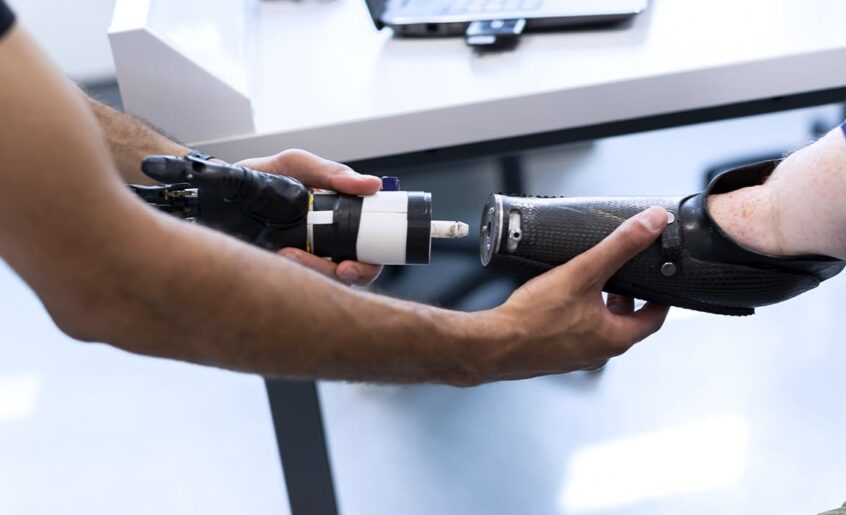There is hope for those who have been without one for so long: Next-generation exoskeletons can help patients move. Indeed, the robot’s gentle nudge can add the right combination of strength to improve walking for people with conditions that limit mobility, such as stroke, spinal cord injuries, and acquired brain injuries.
Breakthrough clinical robotics like those developed by Ekso Bionics are combating mobility and cognitive loss with wearable technology that has helped thousands of patients take more than 130 million steps and inspired a whole new industry of medical devices. Indeed, today’s advances are aimed at redefining rehabilitation with the ultimate goal of helping people regain full mobility, get out of wheelchairs, and get back on their feet.
From wearable exoskeleton suits that provide leg power to upper body exoskeletons that help the shoulder and arm, this technology does everything from helping patients regain upper body strength, endurance and range of motion to providing proper movement patterns in all phases of recovery for those with lower body problems.
Stroke
Each year, 795,000 people in this country have a stroke, 610,000 of them a first or new stroke; According to the CDC, about 185,000 strokes (one in four) are recurrent . If they are lucky, stroke patients will receive only a few short weeks of inpatient rehabilitation therapy. But with such limited time, rehabilitation physicians must focus on getting their patients home safely, which often includes walking to any degree possible.
Unfortunately, many patients never learn to walk normally again after a stroke. And because hard braces prevent them from pushing off the ground with their affected foot, the more they walk, the weaker their ankle becomes and the more the foot sags. According to TheScientist, this approach stifles people’s potential to recover from stroke .
Patients in wheelchairs face additional challenges: not only do they not get support to work on their walking skills, but that sitting day in and day out begins to disrupt bowel and bladder function, reduce bone mass and drain blood pressure. Being in weight-bearing, standing positions is critical to the body, and an exoskeleton suit may be just what the doctor ordered.
Exosuits help stroke patients by appropriately correcting users’ aberrant movements while increasing their pacing.
Regardless of the degree of disability, there is no doubt that today’s exoskeletal suits offer new hope for patients with physical disabilities.
